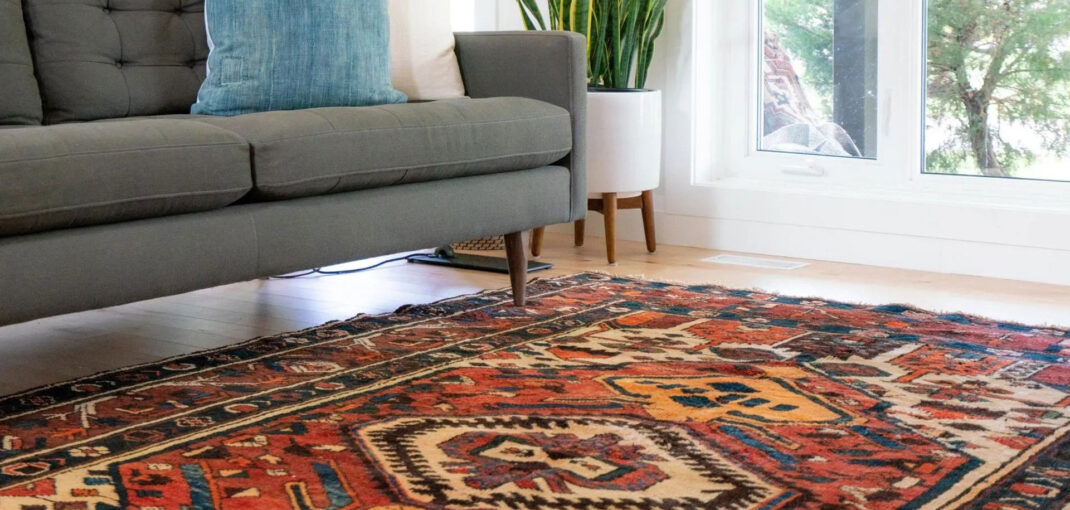Previously, we talked about the benefits and advantages of area rugs, which include warmth, comfort, noise reduction, and protection for your floors. This time, our flooring experts are sharing a few simple tips on how to choose an area rug for your living room, your dining room, your bedroom, or any other space in your home or apartment. Whether you’re a renter or a homeowner read on to get helpful, practical design advice on selecting the right color, pattern, and size for your new area rug.
How to Choose an Area Rug for Any Room in Your Home
Choosing a Rug Size for Any RoomThe beauty of interior design is that no two homes — or homeowners! — are exactly alike. Everyone has their own unique idea of what makes the “perfect” area rug, depending on factors like cost, brand, and style preferences. To find the right area rug for your space, you’ll need to pay careful attention to three important details:
- Rug Size
- Rug Color
- Rug Pattern
Let’s get started by taking a closer look at how to choose the right size area rug for any room in your home.
The first step to finding the perfect rug size is to get an accurate feel for the size and dimensions of your space. However, it’s not necessary to measure the entire room from wall to wall. Instead, a good tip is to simply measure the area around the seating arrangement (or other area where you plan to place the rug). If you don’t have a tape measure, there are plenty of phone apps to help out in a pinch!
Generally, it is good to round up from the measurements of your furniture when choosing an area rug for any room. For example, if you measured roughly 5’6” x 7’4” around your chairs and table, look for a rug with dimensions of at least 6’ x 8’.
A good rule of thumb when measuring a rug for dining room seating, is to choose a rug by the dimensions of your table. If the space in the room allows, try to purchase a rug that is the size of your table plus three feet. This ensures all legs of the table are on the rug and stable, while also accommodating pulling chairs in and our without catching the rug.
When measuring for a living room, you may also want to make sure the rug is large enough to touch the pieces around it. The furniture around the rug should appear to come in contact with the rug so that it anchors the entire room. For example, unlike the dining room, the couch does not have to sit completely on the rug.
At the same time, be sure to leave at least one to two feet of space (or more, depending on your personal preferences) around the outside of the rug. After all, it’s meant to be an area rug — not wall-to-wall carpeting! If a wall-to-wall look is what you prefer, there are plenty of plush, comfortable carpet options ready to be professionally installed in rooms of any size. No matter what style of carpet you are looking for, the At Home Experts are always here to help.
Choosing a Rug ColorNow that you know how to choose an area rug size, the next step is learning how to choose an area rug color. Sure, you could simply go with your favorite shades — and if that’s your style strategy, more power to you! But for those who prefer a more toned-down or color-coordinated look, it helps to follow a few simple design rules.
For example, many style experts suggest following the “60-30-10 rule.” Here’s how it breaks down:
- 60 — Roughly 60% of your room should be the “main” or “theme” color.
- 30 — About 30% of the color in the room will usually be a minor or secondary color. For example, if the room’s main color is blue, the secondary color might be grey or white. Choosing an accent rug with a color from this group is usually a safe bet.
- 10 — About 10% of the color in the room comes from little touches and accents, such as decorations, wall art, or lamps and light fixtures. You can draw on these colors for inspiration in your area rug, too.
Last but not least, you need to know how to choose an area rug pattern. Just like fashion mistakes, rug patterns can get way too “busy” — especially if there are clashing themes. To avoid visual chaos and give your eyes a break, check out the patterns, fabrics, and prints that are already in your space. If the room already incorporates patterns, it’s probably best to take a muted approach — or to steer clear of prints altogether, opting for solid colors instead.
On the other hand, a bold pattern can breathe life into a space that feels like it’s “missing something.” If your space feels like it’s lacking spirit, a fun pattern might be perfect to spruce things up while adding a personal touch. Go bold, understated, or somewhere in between. The sky’s the limit with options like stripes, plaid, polka dots, and patterns inspired by nature, like bright floral patterns or faux tiger stripes.






